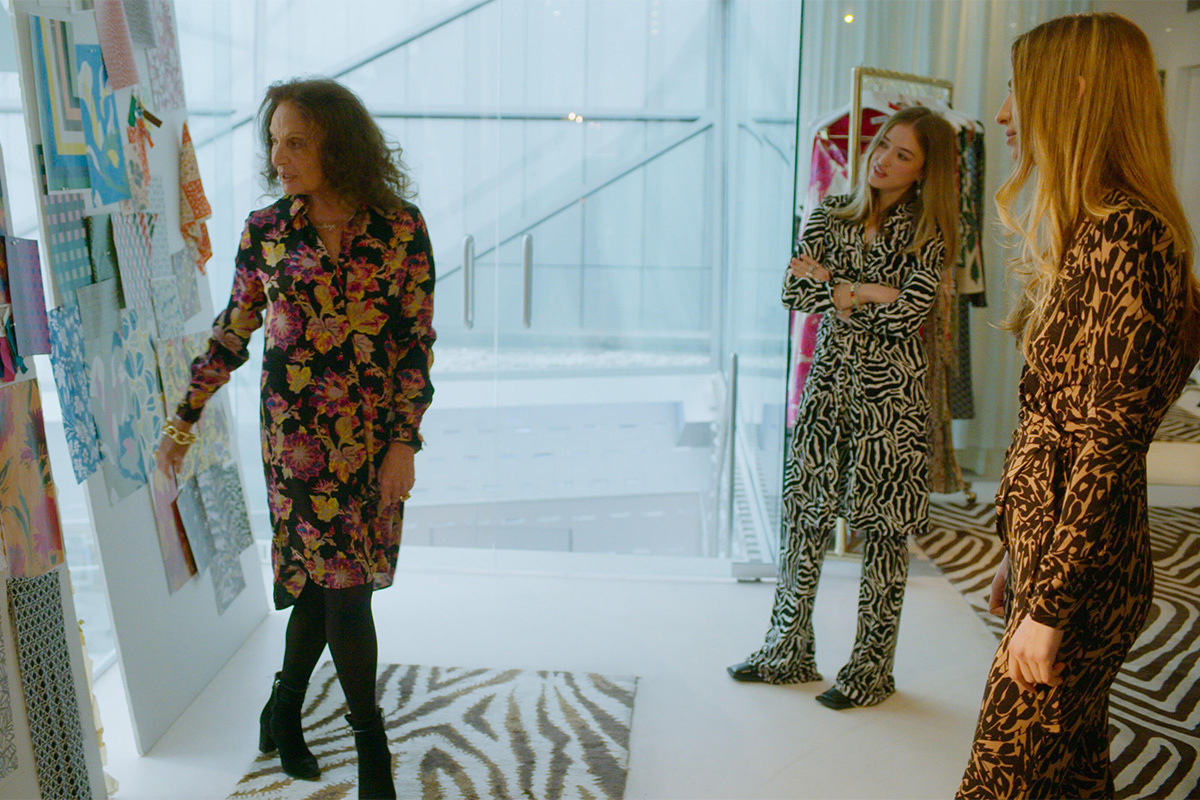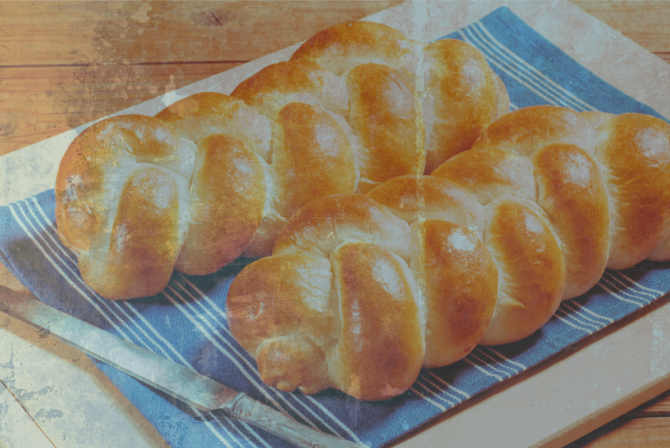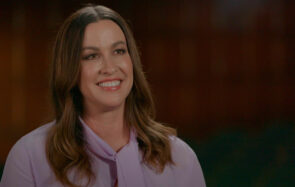Diane von Furstenberg, the designer of the iconic wrap dress, was born 18 months after her mother, Lily Halfin, was liberated from Auschwitz. That fact shaped everything in her life and made her the woman she is — but it was later in life, while being honored at the Anti-Defamation League gala at the Pierre Hotel, where she publicly came out as the daughter of a survivor, that its full weight really struck her. She was suddenly profoundly aware that she was a Jewish woman.
Diane von Furstenberg, or DVF, as many know her, recounts that fateful moment in Hulu’s “Diane von Furstenberg: Woman in Charge,” which paints an incredible, comprehensive, lush and loving portrait of the woman who changed the fashion world with her deceptively simple designs. Since the 1970s, when it first hit the market, the wrap dress has been a sort of armor — fitting its wearer with comfort, ease and femininity, a certain sexiness even. It’s a dress to step into the world during your first job interview or fancy outing. It’s a dress that women — even Oprah Winfrey in her early journalism days — saved their salaries for. My own parents bought me a gauzy cobalt blue DVF dress for my college graduation — it’s still one of my favorite items in my closet.
It’s Furstenberg’s beginnings that she credits with her success. She was her mother’s miracle baby. Halfin was told she could not carry a child to term after barely surviving the death camp, emaciated and weak. Her mother, Diane’s grandmother, fed her, like a wounded bird, a little at a time. And there, less than two years later, was Diane: her biggest joy, her ultimate revenge, Jewish continuity in the face of those who wished to destroy her. “A gift from God,” Lily called her daughter, as well as her “torch of freedom.”
Like many survivors, Lily set out to prepare her daughter for the worst, including another potential Holocaust. But whereas some survivors pass on the lesson of being overly cautious, Lily’s lesson from the horrors she survived was to never let fear take a hold of you. “I don’t think my mother ever said ‘be careful,'” DVF recalls. She unwittingly prepared her to become a woman who could carve out a place for herself in the world — one where she has nothing to fear, where everything is possible, where she could be fully herself.
Furstenberg hated growing up in Brussels. She muses that it may have had to do with the fact that everyone around her had blond hair, while she had dark curls. It never occurred to her at any point that that was something she could alter, and to this day, she doesn’t like the idea of changing her appearance. In fact, she was able to turn those wild and dark Jewish curls that had once made DVF feel so othered into an ideal of beauty, helping to create a world for Jewish girls to feel sexy and beautiful, too.
“Woman in Charge” doesn’t just paint a portrait of a glamorous jet-setting lifestyle. It also touches on the many pain points of DVF’s life, including the overt antisemitism she faced from her first husband’s family. Diane loved Egon von Furstenberg until the day he died, heart-wrenchingly and painfully so, but his family wasn’t happy to have their German aristocratic lineage mixed with Jewish blood, according to the documentary.
Egon and Diane married when she was pregnant with their first child, Alexandre (she didn’t wear white, but a colorful belt around her midriff). One day, while walking in the garden, hurt by her husband’s family’s disdain, she had a conversation with her unborn child. “We will show them,” she said, in what felt like a l’dor v’dor (from generation to generation) moment. Whereas Lily felt like the birth of Diane was her revenge against the Nazis, DVF found her revenge in her resilience as a mother and a woman.
And show them, they did. Ironically, the reason people all over the world know of the name von Furstenberg is not thanks to the royal family it belonged to, but to that Jewish girl from Brussels, the daughter of a survivor. Lily was there as a second mother to Diane’s kids when they were growing up, as their mother was busy revolutionizing the way women dressed and thought of themselves. But Alex says that he always felt her career was “secondary to family and love,” saying she was not “so different to any other Jewish mom.” (One of the most relatable Jewish mom moments in the documentary, to me, is how DVF is adorned by not one, but two gigantic evil eye jewels: a big ring and a big bracelet, given to her by her current husband Barry Diller. What Jewish mom shies away from Jewish superstition?!)
Her daughter Tatiana has a bit of a more complex image of DVF. Even if her mother says her children were always in her heart, it’s clear Tatiana felt her absence and inattention at times — especially in the face of what Tatiana later discovered was her own disability. Still, this documentary paints a picture of a loving Jewish mother, one who was always looking out for her children, but also open to admitting her regrets and mistakes when it comes to parenting, which is maybe just as important a lesson.
Earlier this month, on an oppressively sunny and humid day in New York, my mother and I walked into the DVF store in the Meatpacking District. It’s bright and cool and comforting, with prints and colors everywhere. My mother, a daughter of survivors just like DVF, tried on a dress for my cousin’s wedding. Women of every age and body type seemed to be there in the store with us, and everyone who tried something on looked stunning.
I can’t quite afford a DVF dress (though I was able to snag a couple of dresses from her limited Target collection, in collaboration with her granddaughter Talita — another l’dor v’dor), but I am so grateful that I can still bask in the vibrant, easy femininity of her clothes, and more now, in the incredible story of the woman behind them. Perhaps one thing we can all afford to do is take a lesson or two on fearlessness and authenticity from the women behind our favorite colorful prints.








